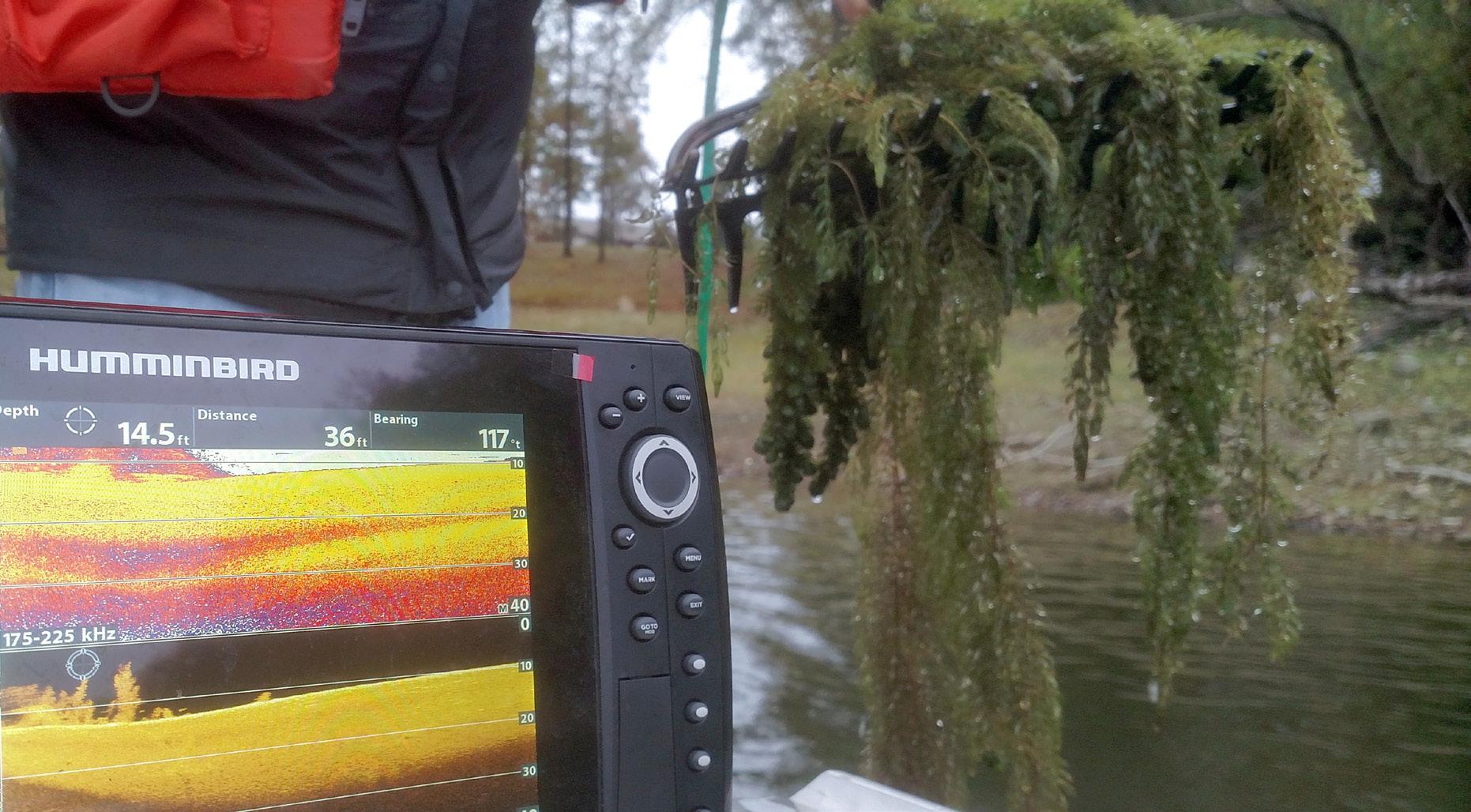UAPB Specialists Work to Restore Aquatic Vegetation at DeGray Lake
Traditional and down-imaging sonar images of coontail, left, with actual coontail collected by a weed collection rake from the same location at DeGray Lake, right.
F
aculty and staff at the UAPB Department of Aquaculture and Fisheries continue to make progress on a number of research projects that benefit the university’s partners and the Arkansas public. As part of one ongoing initiative, Scott Jones, small impoundment Extension specialist, has been poring over recent video footage shot with a submersible drone in the depths of DeGray Lake, located in southwest Arkansas in the Ouachita Mountains foothills. Jones said the recording documents his attempts in getting familiar with operating the new underwater drone technology. The video takes viewers on a journey from over the side of a boat, through surface waters and down to the lakebed. “We travel through a plethora of aquatic plants and past obstacles such as submerged logs,” Jones said. “Gliding over carpets of macroalgae, we encounter species such as black bass, suckers, catfish and turtles along the way.” Surveillance of the lakebed is one component of an Arkansas Game and Fish Commission
6
Challenging Times Call for Creative Solutions
(AGFC) effort to reestablish aquatic vegetation in DeGray Lake, Jones said. Because UAPB recently established a line of research specifically addressing the habitat needs of fish, the AGFC is collaborating with UAPB’s research laboratory for assistance in reestablishing native aquatic plants as a way to benefit the lake’s fish populations and overall biodiversity. Jones said DeGray Lake once had one of the strongest black bass fisheries in the state and also supported an abundant aquatic plant community. By 2010, however, a combination of biotic (animal) and abiotic (weather) factors negatively influenced the ability of aquatic vegetation to survive and reproduce. The result was a near complete loss of submersed aquatic plants in the lake. “At the same time, the quality of the black bass fishery declined to the point that anglers began requesting AGFC intervention regularly,” he said. “While it’s difficult to find empirical evidence that an abundance of aquatic plants was directly responsible for a healthy black bass fishery in DeGray Lake, numerous studies have shown that fisheries tend to respond










